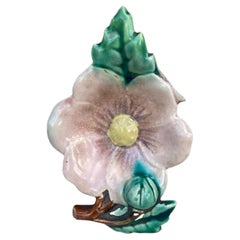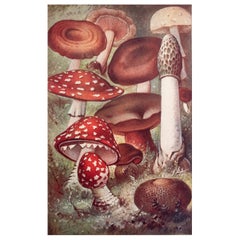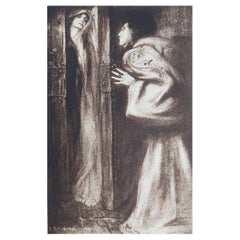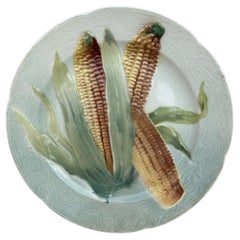Early 1900s Decorative Art
French Rustic Antique Early 1900s Decorative Art
Ceramic
English Edwardian Antique Early 1900s Decorative Art
Paper
American Romantic Antique Early 1900s Decorative Art
Paper
British Folk Art Antique Early 1900s Decorative Art
Paper
French Rustic Antique Early 1900s Decorative Art
Ceramic
French Chinoiserie Antique Early 1900s Decorative Art
Ceramic, Faience
English Edwardian Antique Early 1900s Decorative Art
Paper
Italian Antique Early 1900s Decorative Art
Other
English Antique Early 1900s Decorative Art
Other
French Art Nouveau Antique Early 1900s Decorative Art
Ceramic
German Art Nouveau Antique Early 1900s Decorative Art
Ceramic
French Art Nouveau Antique Early 1900s Decorative Art
Ceramic, Faience, Majolica
Belgian Belle Époque Antique Early 1900s Decorative Art
Silver
German Country Antique Early 1900s Decorative Art
Ceramic, Majolica
British Folk Art Antique Early 1900s Decorative Art
Paper
French Art Nouveau Antique Early 1900s Decorative Art
Ceramic, Faience, Majolica
French French Provincial Antique Early 1900s Decorative Art
Ceramic
Italian Greco Roman Antique Early 1900s Decorative Art
Other
English Art Nouveau Antique Early 1900s Decorative Art
Copper
German Aesthetic Movement Antique Early 1900s Decorative Art
Ceramic
English Aesthetic Movement Antique Early 1900s Decorative Art
Ceramic
Antique Early 1900s Decorative Art
Paper
French Rustic Antique Early 1900s Decorative Art
Ceramic
American Folk Art Antique Early 1900s Decorative Art
Tin
English Arts and Crafts Antique Early 1900s Decorative Art
Copper
French Rustic Antique Early 1900s Decorative Art
Terracotta
French Art Nouveau Antique Early 1900s Decorative Art
Ceramic
English Chinoiserie Antique Early 1900s Decorative Art
Paper
French Art Nouveau Antique Early 1900s Decorative Art
Wood
Italian Renaissance Antique Early 1900s Decorative Art
Majolica
French Rustic Antique Early 1900s Decorative Art
Ceramic, Faience
French Country Antique Early 1900s Decorative Art
Ceramic, Faience
French Aesthetic Movement Antique Early 1900s Decorative Art
Ceramic
Persian Antique Early 1900s Decorative Art
Wool
French French Provincial Antique Early 1900s Decorative Art
Ceramic
English Antique Early 1900s Decorative Art
Paper
French Art Nouveau Antique Early 1900s Decorative Art
Fruitwood
German Rustic Antique Early 1900s Decorative Art
Ceramic
Indian Antique Early 1900s Decorative Art
Wool
Persian Antique Early 1900s Decorative Art
Wool
German Rustic Antique Early 1900s Decorative Art
Ceramic
Austrian Folk Art Antique Early 1900s Decorative Art
Canvas, Giltwood
French Rustic Antique Early 1900s Decorative Art
Ceramic
Austrian Vienna Secession Antique Early 1900s Decorative Art
Copper
German Country Antique Early 1900s Decorative Art
Ceramic, Faience, Majolica
Spanish Other Antique Early 1900s Decorative Art
Other
French Rustic Antique Early 1900s Decorative Art
Ceramic
British Edwardian Antique Early 1900s Decorative Art
Gold, Enamel
German Country Antique Early 1900s Decorative Art
Majolica, Ceramic, Faience
French Belle Époque Antique Early 1900s Decorative Art
Glass, Giltwood, Paper
Austrian Art Nouveau Antique Early 1900s Decorative Art
Metal, Enamel, Iron
English Arts and Crafts Antique Early 1900s Decorative Art
Copper
Persian Antique Early 1900s Decorative Art
Wool
English Neoclassical Antique Early 1900s Decorative Art
Paper
French Art Nouveau Antique Early 1900s Decorative Art
Ceramic
American Edwardian Antique Early 1900s Decorative Art
Paper
English Neoclassical Antique Early 1900s Decorative Art
Paper
German Art Nouveau Antique Early 1900s Decorative Art
Stone, Copper
German Rustic Antique Early 1900s Decorative Art
Ceramic
Art Nouveau Antique Early 1900s Decorative Art
Canvas, Wood
Read More
At Colonial Williamsburg, Everything Old Is New Again
With the help of a new director, the Virginia institution's folk art and decorative arts museums are undergoing extensive upgrades.
New York’s Hirschl & Adler Showcases the American Workmanship and Design Panache of Neoclassical Treasures
The gallery's latest exhibition proves that museum-quality pieces entice and inspire, whether in traditional or more modern interiors.





